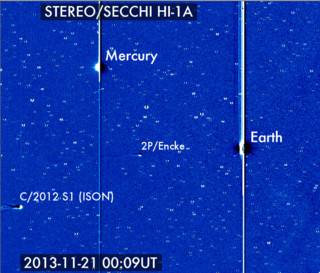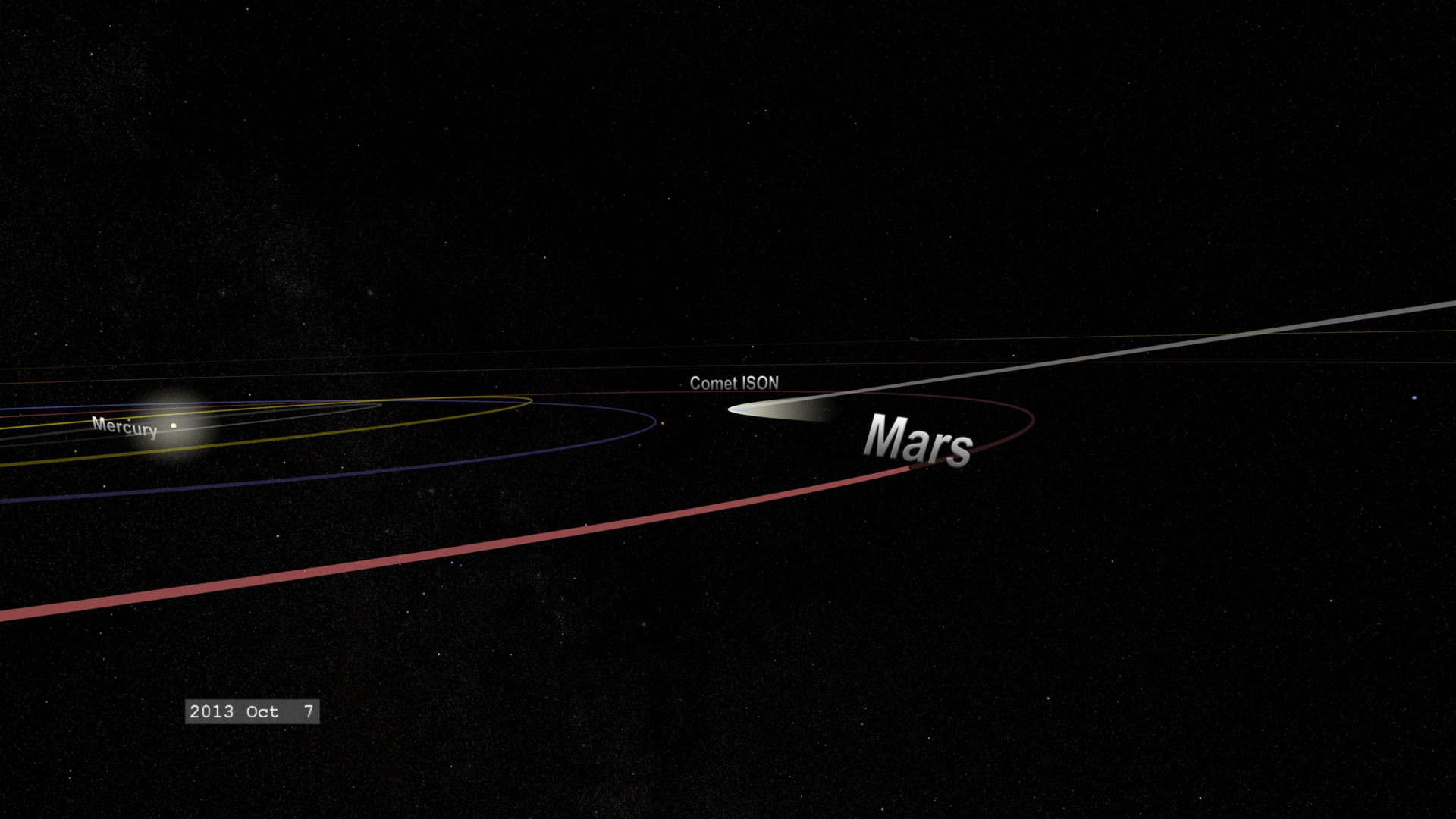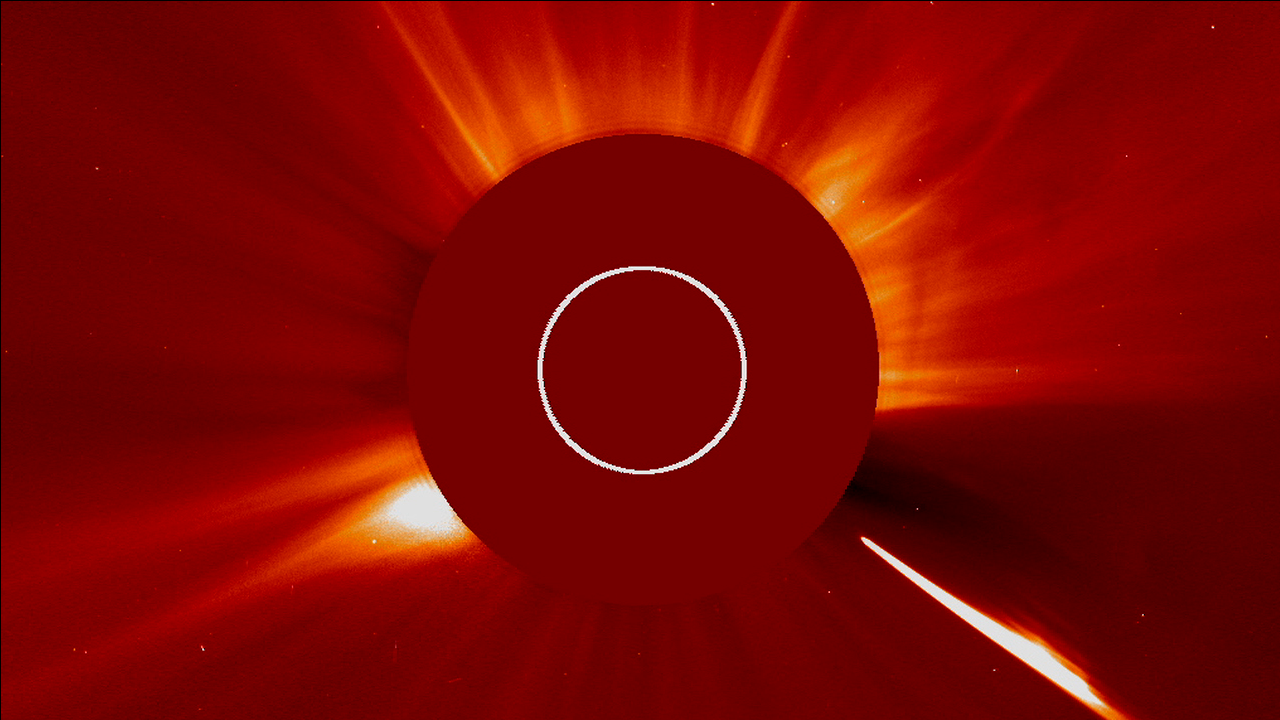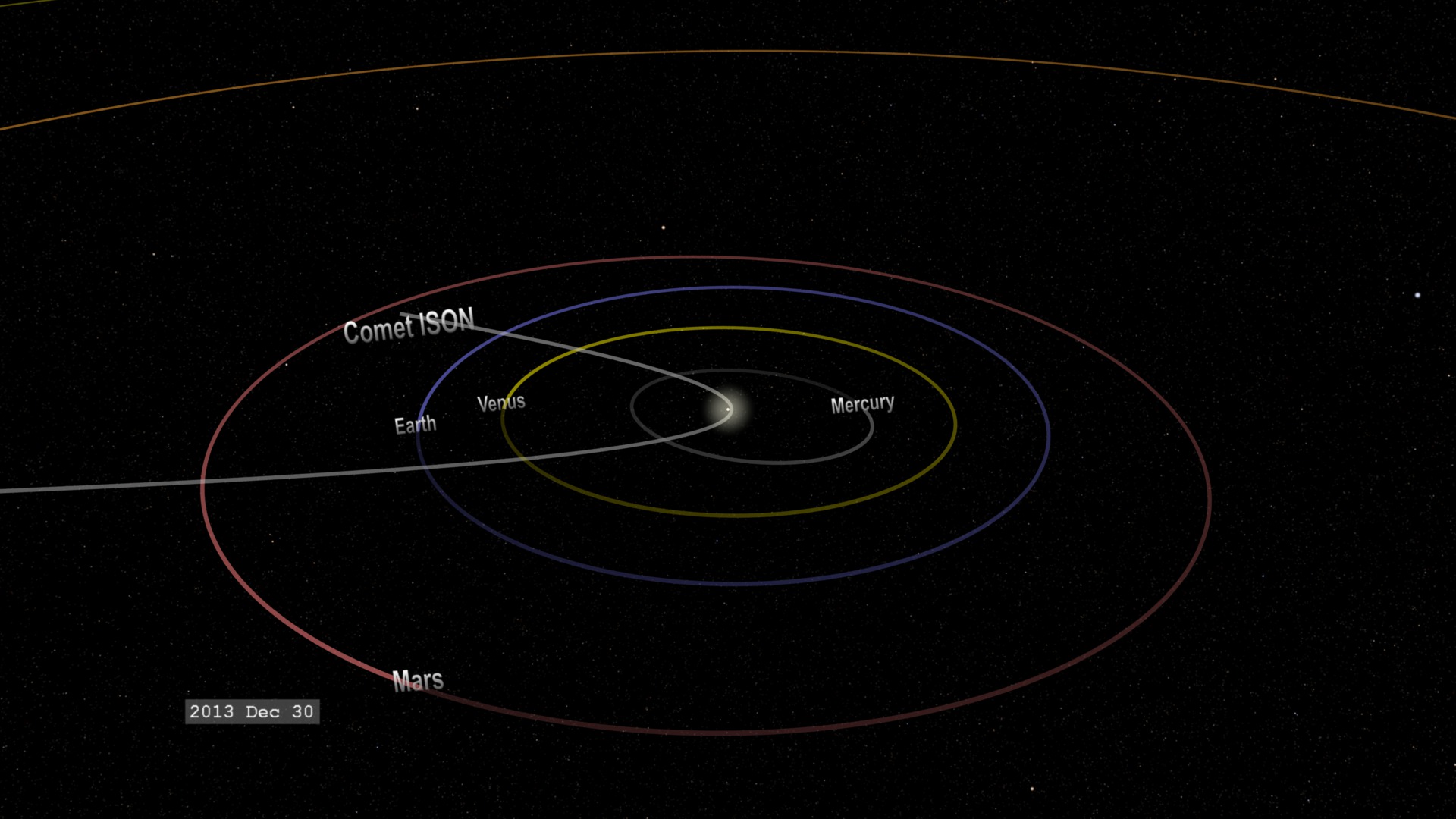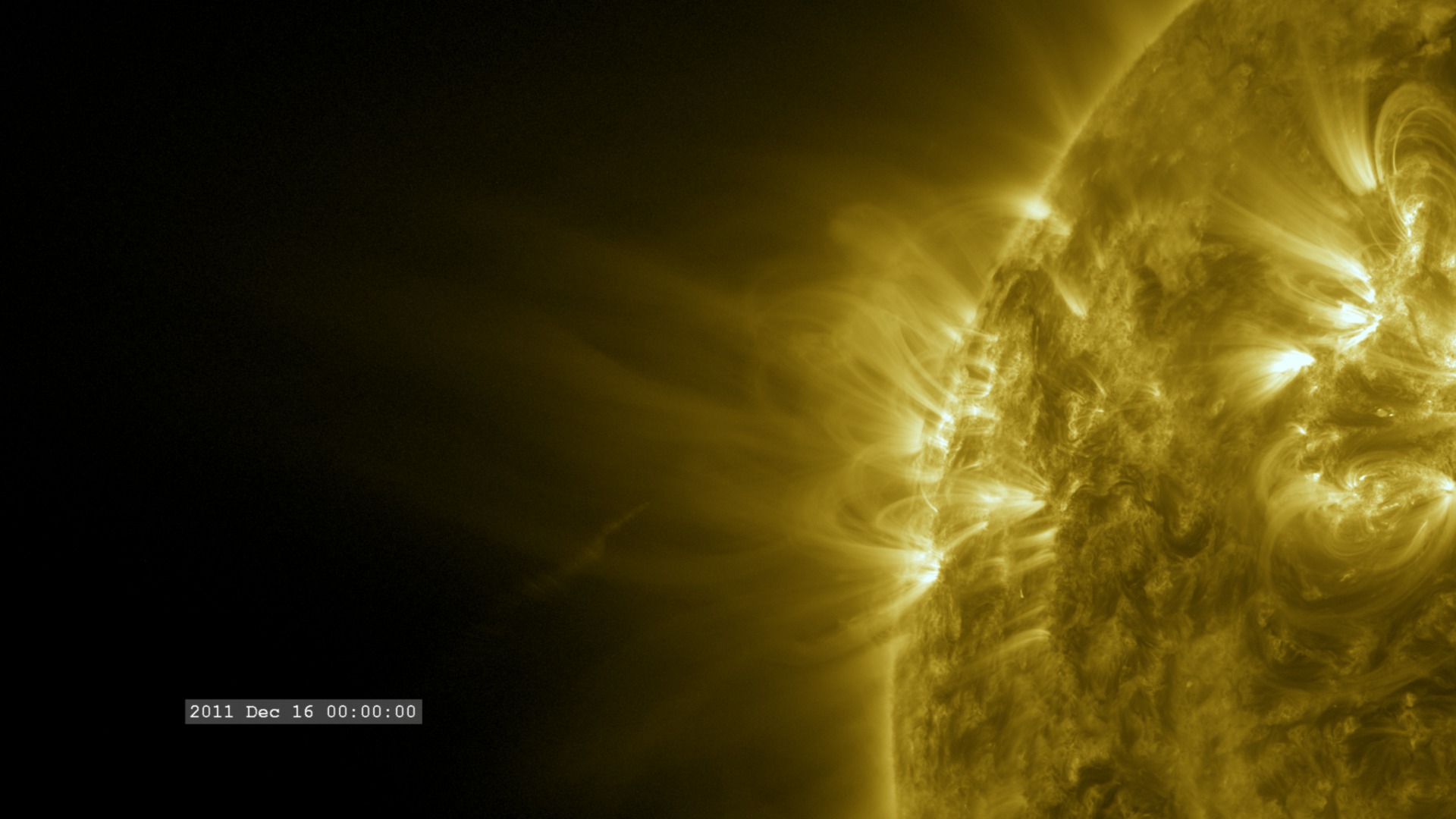The Path of Comet ISON
Comet C/2012 S1, better known as comet ISON, may become a dazzling sight as it traverses the inner solar system in late 2013. During the weeks before its Nov. 28 close approach to the sun, the comet will be observable with small telescopes, and binoculars. Observatories around the world and in space will track the comet during its fiery trek around the sun. If ISON survives its searing solar passage, which seems likely but is not certain, the comet may be visible to the unaided eye in the pre-dawn sky during December.
Watch the animations on this page to visualize ISON's voyage through the inner solar system, or build the paper model of its orbit to track the changing positions of Earth and the comet.
Like all comets, ISON is a clump of frozen gases mixed with dust. Often described as "dirty snowballs," comets emit gas and dust whenever they venture near enough to the sun that the icy material transforms from a solid to gas, a process called sublimation. Jets powered by sublimating ice also release dust, which reflects sunlight and brightens the comet.
On Nov. 28, ISON will make a sweltering passage around the sun. The comet will approach within about 730,000 miles (1.2 million km) of its visible surface, which classifies ISON as a sungrazing comet. In late November, its icy material will furiously sublimate and release torrents of dust as the surface erodes under the sun's fierce heat, all as sun-monitoring satellites look on. Around this time, the comet may become bright enough to glimpse just by holding up a hand to block the sun's glare.
Sungrazing comets often shed large fragments or even completely disrupt following close encounters with the sun, but for ISON neither fate is a forgone conclusion.
Following ISON's solar swingby, the comet will depart the sun and move toward Earth, appearing in morning twilight through December. The comet will swing past Earth on Dec. 26, approaching within 39.9 million miles (64.2 million km) or about 167 times farther than the moon.
The comet was discovered on Sept 21, 2012, by Russian astronomers Vitali Nevski and Artyom Novichonok using a telescope of the International Scientific Optical Network (ISON) located near Kislovodsk.
Learn more about sungrazing comets.
Comet ISON is now approaching the inner solar system. Discovered last year, the comet remains unusually active for its distance from the sun. If current trends continue, ISON could rank as one of the brightest comets in decades when it makes its close approach to the sun in late November. This animation shows the comet's approach and departure from the inner solar system from various perspectives.
Credit: NASA's Goddard Space Flight Center Scientific Visualization Studio
Watch this video on YouTube.
For complete transcript, click here.
This animation shows two views of comet ISON's path through the inner solar system. The first is a view following the comet along its orbit. The second is a view perpendicular to ISON's orbit.
Credit: NASA's Goddard Space Flight Center Scientific Visualization Studio
Watch this video on YouTube.
For complete transcript, click here.

Still of all four views of ISON orbital path.

This paper model illustrates the comet's path during its six-month trek in the vicinity of Earth, Venus and Mercury. Track how the relationship between Earth and the comet constantly changes by referring to the dates along both orbits.
Download the pdf with instructions here.

From now through October, Comet ISON tracks through the constellations Gemini, Cancer and Leo as it falls toward the sun.
Credit: NASA's Goddard Space Flight Center/Axel Mellinger, Central Michigan Univ.
More of Axel Mellinger's images here.

From now through October, Comet ISON tracks through the constellations Gemini, Cancer and Leo as it falls toward the sun. No Labels.
Credit: NASA's Goddard Space Flight Center/Axel Mellinger, Central Michigan Univ.
More of Axel Mellinger's images here.

The Ultraviolet/Optical Telescope aboard NASA's Swift imaged Comet ISON (center) on Jan. 30, when it was located about 3.3 degrees from the bright star Castor in the constellation Gemini. At the time of this 5.5-minute optical exposure, ISON was about 5,000 times fainter than the limit of human vision and was located 375 million miles (604 million km) from Earth and 460 million miles (740 million km) from the sun.
Credit: NASA/Swift/D. Bodewits, UMCP

The Ultraviolet/Optical Telescope aboard NASA's Swift imaged Comet ISON (center) on Jan. 30, when it was located about 3.3 degrees from the bright star Castor in the constellation Gemini. At the time of this 5.5-minute optical exposure, ISON was about 5,000 times fainter than the limit of human vision and was located 375 million miles (604 million km) from Earth and 460 million miles (740 million km) from the sun.
Credit: NASA/Swift/D. Bodewits, UMCP
For More Information
Credits
Please give credit for this item to:
NASA's Goddard Space Flight Center
-
Visualizers
- Tom Bridgman (Global Science and Technology, Inc.)
- Francis Reddy (University of Maryland College Park)
-
Video editor
- Scott Wiessinger (USRA)
-
Producer
- Scott Wiessinger (USRA)
-
Science writer
- Francis Reddy (University of Maryland College Park)
-
Designer
- Francis Reddy (University of Maryland College Park)
Release date
This page was originally published on Friday, March 29, 2013.
This page was last updated on Tuesday, November 14, 2023 at 12:18 AM EST.
Series
This visualization can be found in the following series:Tapes
This visualization originally appeared on the following tapes:-
Comet ISON
(ID: 2013030)
Friday, November 29, 2013 at 5:00AM
Produced by - Robert Crippen (NASA)
